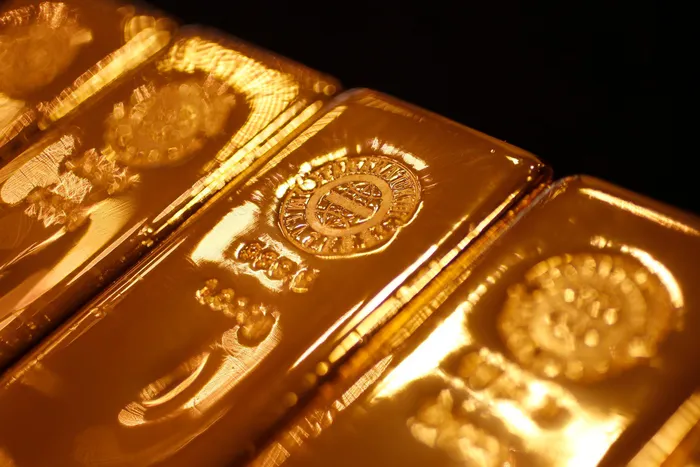Gold’s resurgence: a hedge in an age of uncertainty
INVESTING

In a world gripped by fragmentation and geopolitical flux, gold has emerged as a hedge of choice, says the author.
Image: Reuters
In a world gripped by fragmentation and geopolitical flux, gold has emerged – again – as a hedge of choice. While we’ve seen the metal come off its record highs in recent weeks, its continued rally despite elevated interest rates speaks volumes. This signals not just market jitters, but a deeper search for something stable in an increasingly volatile environment.
The current environment is best described in one word: uncertainty. From trade tensions to inflationary pressures, and from geopolitical conflicts to murky growth prospects, the world is navigating a tangled web of unknowns. And in times like these, investors revert to what they trust – assets that have stood the test of time. Gold, with its enduring legacy and physical tangibility, fits that bill.
While gold remains the anchor in an uncertain environment – investors are jittery. We saw an immediate pullback when the US and China showed early signs of renewed cooperation, highlighting just how sensitive markets have become. Volatility is high, not because of shifting fundamentals, but because sentiment is on a knife edge. Every political signal prompts a reaction, revealing a landscape where instinct is often driving decisions more than data.
Gold as an insurance policy
To be clear, we are not in new territory. Gold has always had this role – as an insurance policy in periods of potentially high systemic risk. But what’s different today, is how quickly investors are responding. There’s a real-time reflex happening. One day it’s tariffs, the next day détente. Investors toggle between risk-on and risk-off strategies with whiplash speed.
What we’re seeing isn’t necessarily a reshaping of investor behaviour – it’s a refocusing. Investors are getting more defensive, rebalancing portfolios to protect against volatility and currency risk. In South Africa, gold has long been a go-to hedge against rand depreciation and global shocks. That pattern continues, though perhaps with renewed importance as risk management becomes increasingly important in portfolio management strategies.
What it means for South Africa
Does this rally fundamentally shift South Africa’s economic outlook? Not quite. Gold, while important, now makes up a relatively small portion of our export basket. Precious metals contribute about 10 to 15% of our total exports, and gold is a meaningful part of that. However, as local production has been in structural decline for years due to ageing, deepening and increasingly complex mines, gold’s contribution could continue to decline over time.
But there is a silver lining. Elevated gold prices do mean higher tax receipts for the state. These revenues can be directed to urgent priorities like infrastructure, public services, or stabilising struggling SOEs. If managed well, the fiscal space gold provides could be a meaningful – if temporary – support.
That said, South Africa could still do more to position itself better. A more stable and predictable regulatory and political environment, along with reliable electricity supply, would improve the viability of mining operations and help sustain their profitability. This in turn would support reinvestment into the sector and safeguard long-term tax contributions.
The equities play
Gold’s current pricing also bodes well for local and global gold equities. South African corporations like AngloGold, Gold Fields, Harmony and Pan African Resources are benefiting from higher margins and improved cash flows. Some are using the momentum to invest in new projects – Gold Fields is advancing operations in Chile. Overall, an interesting trend is the increased mergers and acquisitions activity – Harmony’s recently acquired a copper-gold project, in the gold sector as miners are focused on putting capital to work to replace depleting assets, expand into new geographies or diversify into polymetallic deposits that offer commodity diversification for their portfolios.
These companies aren’t just holding onto the gains – they’re paying dividends and making strategic acquisitions. That signals confidence in the medium-term price environment, even if some of the current spike is cyclical.
Is this a moment or a movement?
The big question remains: is this a temporary surge or the start of a structural shift? I’d argue it’s both.
In the short term, gold is clearly reacting to heightened uncertainty. But over the longer term, should we enter a prolonged period of economic fragmentation, trade protectionism, and deglobalisation – as Trump’s return to the global stage seems to suggest – then gold could remain supported at higher-than-historical levels.
Even if prices stabilise, they may well do so at levels significantly above previous cycles. That’s a meaningful shift. And for investors, gold equities – rather than physical bullion – may present a more compelling long-term value opportunity, offering both earnings and valuation upside.
Siphelele Mhlongo, Equity Analyst & Assistant Portfolio Manager at Sanlam Investments
** The views expressed here do not necessarily represent those of Independent Media or IOL.
BUSINESS REPORT